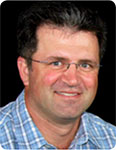Defining net reservoir using the dual packer wireline formation tester: a case study from the Clio, Acme, and Acme West fields
Matthew Flett A , Julie Cass A and Jack Harfoushian BA Chevron Australia
B Schlumberger Australia
The APPEA Journal 53(1) 9-30 https://doi.org/10.1071/AJ12002
Published: 2013
Abstract
The Clio, Acme, and Acme West gas fields lie in the WA-42-R permit in the Carnarvon Basin, offshore WA. The reservoirs at the Clio, Acme, and Acme West fields generally have excellent reservoir characteristics with multi-Darcy permeabilities. Some additional potential may occur in more marginal-quality reservoirs. To determine the potential of the marginal sands, a dual packer wireline formation tester (WFT) was used to constrain petrophysical cut-offs of the target Mungaroo and Brigadier formations, which consist of fluvial and deltaic reservoirs. A decision-based approach in the application of the dual packer WFT has allowed for systematic evaluation of the dynamic behavior of each depositional environment at proposed reservoir cut-offs, and has provided insight into the flow mechanisms controlling productivity in the near-well environment
The controls on reservoir quality between these two depositional environments are very different. The fluvial reservoirs are characterised by large ranges of permeability variation for very small changes in porosity as a function of grain-size variation. The dual packer WFT stations conducted in the Clio–3 fluvial sands demonstrate the role of entry pressure to gas charge, and allowed for the quantification of the minimum total porosity needed for net reservoir to be present in the well
The sands in the sand/shale laminae of the deltaic environment have much less reservoir quality variation than the sands in the fluvial system. Reservoir quality is controlled by the connectivity of these sands both laterally and vertically. Sand connectivity is inferred from neutron density crossover, and is tested with dual packer WFT stations at Acme West–2
The integration of data gathered at the Clio–3 and Acme West–2 dual packer WFT stations has been used to establish net-to-gross cut-offs applied to these reservoirs

Matthew Flett is a senior reservoir engineer for Chevron Australia, with responsibilities in reservoir engineering function for exploration, and appraisal and subsurface field development for the WA-42-R fields including the Clio, Acme, and Acme West fields. Matthew joined Chevron Australia in 2003 and has had previous roles in (among others) the subsurface field development planning and appraisal for the Gorgon CO2 re-injection project for the Chevron-operated Gorgon Project. Matthew has Bachelor of Science and Bachelor of Engineering (Chemical) with Honours degrees from the University of Adelaide, and a Professional Doctorate in Petroleum Engineering from Curtin University. He is presently the Editorial Chair for SPE News Australasia, and is a committee member for the SPE WA section. Member: IEA and SPE. Matthew.Flett@Chevron.com |

Julie Cass is the Earth science team lead for Chevron Australia’s appraisal group in Perth. Previously, Julie acted as the petrophysics team lead for major capital projects, and was the petrophysicist assigned to develop and execute formation evaluation programs for nine of Chevron Australia’s recent exploration discoveries, including Clio–3, Acme–1, Acme West–1, and Acme West–2. Prior to joining Chevron Australia in 2009, Julie held various petrophysical specialist and leadership positions for Marathon Oil and Helix RDS in the UK, and Santos in Brisbane. Julie has a Bachelor of Science (Applied Geology) degree, and a Master’s degree in Engineering Science (Petroleum Engineering) from Curtin University. Member: SPE and Society of Petrophysicists and Wireline Analysists (SPWLA). JulieCass@Chevron.com |

Jack Harfoushian is a principal reservoir engineer, located in Perth, for Schlumberger Australia. He provides data acquisition support and interpretation development for formation testing and sampling, including downhole fluid analysis (DFA), interval pressure transient testing, and in-situ stress testing. Jack joined Schlumberger in 1989 as a wireline field engineer, and has held assignments in Europe, Africa, Australia, and in the Middle and Far East. Jack holds a Bachelor of Engineering degree from Curtin University, and a Master of Engineering degree in Reservoir Engineering from Heriot-Watt University in Scotland. He has given a number of presentations on formation testing and sampling at various conferences. Jack has served as a SPE section committee member in Kuala Lumpur and in Perth, and has been a member of the SPE Distinguished Lecturers committee. Member: SPE. Harfoushian@slb.com |


